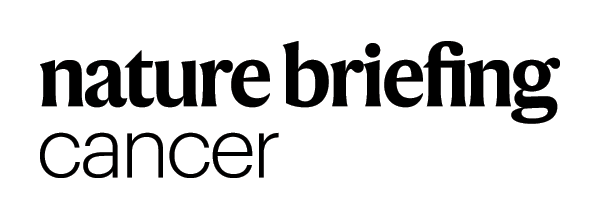| |||||
| |||||
| Hello Nature readers, | |||||
 | |||||
| Ribosomes, the machinery inside cells that make proteins, hibernate by attaching themselves upside down on the surface of mitochondria. (O. Gemin et al./Nature Comm.) | |||||
Ribosomes sleep like bats to hibernateYeast cells survive nutrient shortages by attaching their protein-making ribosomes upside down on the surface of mitochondria — an orientation that causes the ribosomes to shut down and the cell to become dormant. Cancer cells could undergo a similar hibernation to protect themselves during times of nutrient scarcity, say researchers. "Since the adaptive response to nutrient cues is commonly observed in cancer, our study could also provide a molecular understanding of cell persistence in pathological environments," they authors report. The Microbiologist | 4 min readReference: Nature Communications paper (8 October) | |||||
'Biggest gain in survival since 1999'The risk of death from cervical cancer decreased by 40% over five years when women were given chemotherapy followed by chemoradiotherapy instead of chemoradiotherapy alone. Five hundred women randomly received either chemotherapy (carboplatin and paclitaxel) followed by radiotherapy plus cisplatin, or the standard chemoradiation. The five-year survival rate was 80% in the group given the new treatment and 72% in women given the standard treatment. "This is the biggest gain in survival since the adoption of chemoradiation in 1999," said oncologist and co-author Mary McCormack. The Guardian | 4 min readReference: The Lancet paper (19 October) | |||||
In the news
| |||||
| |||||
 | |||||
| Advanced human cancers have more extrachromosomal DNA than early-stage cancers. (Getty) | |||||
Hypermutations in DNA rings drive cancerRapid mutations in rings of DNA could be causing cancers to become more aggressive. Researchers performed whole-genome sequencing on more than 8,000 tumour samples and found that cancer progression was associated with a higher frequency of hypermutated extrachromosomal DNA. A separate study found that chemotherapy and virus-fighting APOBEC3 enzymes were driving mutations in extrachromosomal DNA in human bladder cancer cells. References: Nature Genetics paper (14 October) & Nature paper (9 October) | |||||
A century of cancer-metabolism researchBiochemist Otto Warburg first described metabolic changes inside cancer cells in 1923. More than 100 years on, the field is still going strong, as shown in this collection of metabolism articles across Springer Nature journals. One study in the collection reveals an increase in mitochondrial activity as kidney cancer travels to distant organs. Another suggests that the metabolic profile of the primary cancer site influences which tissues the cancer can colonize. Cancer Metabolism 2.0, a Nature Portfolio collectionReferences: Nature paper (14 August) and Nature Metabolism paper (19 August) | |||||
| |||||
Cancer risk from IUDs a 'statistical illusion'?A Danish study that tracked nearly 80,000 people over two decades has found an association between the use of hormonal intrauterine devices (IUD) and breast cancer. The increased risk is so small in absolute terms that this "might be a statistical illusion rather than a real thing", writes primary care physician Brett Montgomery. For every 10,000 women using a hormonal IUD, there would be 71 more cases of breast cancer over 10-15 years, the study suggests. The risk from IUDs "may be dwarfed by other risks for breast cancer, such as high body weight, physical inactivity, alcohol use, and smoking", Montgomery writes. The Conversation | 5 min readReference: JAMA research letter (16 October) | |||||
| |||||
| |||||
 | |||||
| Tugging, squashing, ripping, moving; these are just some of the mechanical forces at play inside solid tumours that can influence the development and spread of cancer cells. View a larger version of this image here. (Nature Reviews Cancer | 57 min read) (J. A. Linke et al./Nature Rev. Cancer) | |||||
Quote of the week"When I was 23 years old, I found out I had cancer… I immediately decided against freezing my eggs."Rachel Hunt wonders whether her "lifelong apathy" towards having biological children prepared her for this moment. (The Washington Post | 4 min read) | |||||
| | |||||
| |||||
| | |||||
Free newsletters from NatureWant more? Update your preferences to sign up to our other Nature Briefing newsletters:
| |||||
Access Nature and 54 other Nature journals Nature+ is our most affordable 30-day subscription, giving you online access to a wide range of specialist Nature Portfolio journals, including Nature. | |||||
| |||||
| You received this newsletter because you subscribed with the email address: gustavo.braslavsky@gmail.com Please add cancerbriefing@nature.com to your address book. Enjoying this newsletter? You can use this form to recommend it to a friend or colleague — thank you! Had enough? To unsubscribe from this Briefing, but keep receiving your other Nature Briefing newsletters, please update your subscription preferences. To stop all Nature Briefing emails forever, click here to remove your personal data from our system. Fancy a bit of a read? View our privacy policy. Forwarded by a friend? Get the Briefing straight to your inbox: subscribe for free. Get more from Nature: Register for free on nature.com to sign up for other newsletters specific to your field and email alerts from Nature Portfolio journals. Nature Portfolio | The Springer Nature Campus, 4 Crinan Street, London, N1 9XW, United Kingdom Nature Portfolio, part of Springer Nature. |
Hypermutations inside rings of DNA might drive cancer progression
Subscribe to:
Post Comments (Atom)


No comments:
Post a Comment